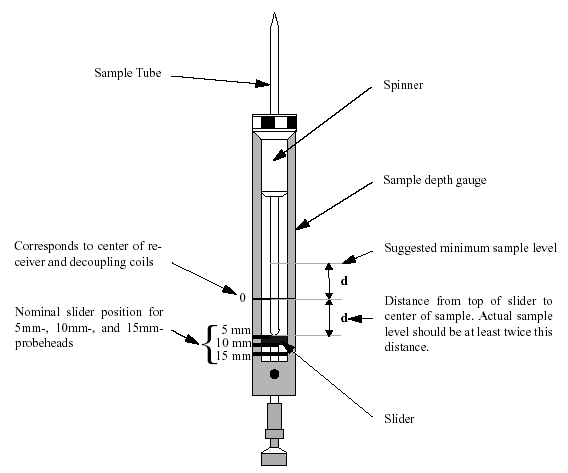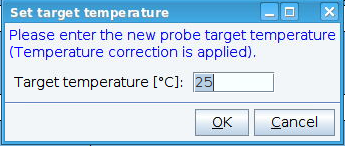...
Now that you have your sample ready, that meets the sample requirements and is in an NMR tube, you can insert it in the Bruker spinner and adjust the depth using the sample depth gauge as depicted below:
Source: Bruker - BSMS manual
...
Then, in TopSpin, on the control computer, enter the command ej to activate the air lift and if it is the case, eject the sample already present in the magnet. Climb up the stairs and replace the previous sample in the bore (red turret) with yours. Make sure the air lift is activated so that your sample does not fall in the bore. The pneumatic system should be powerful enough to maintain your sample on top.
Come back to the control computer and type ij in TopSpin to inject your sample in the bore. Your sample will then slowly lower down into the core of the magnet and in the NMR probe.
...
The first thing to do following the insertion of your sample in the magnet, is to set the temperature, as most chemical shifts are temperature dependent, including the lock signal. Use the command edte to open the temperature window in TopSpin. The current temperature is written in the center of the window (25.0 °C), and is labeled as corrected (Corr.)
The temperature set on the computer is slightly different from the actual temperature in the magnet.
Lock
The lock is a separate NMR spectrometer within the spectrometer which is specific to deuterium. In order to produce a high resolution NMR spectrum of a sample, it is key to keep a constant magnetic field strength over the duration of the experiment. This is achieved by "locking" the spectrometer to the frequency of deuterium, ie by centering the deuterium signal to a predefined frequency. This signal is constantly monitored and compensations for the external magnetic field (B~0~) drift are made in order to keep the resonance frequency constant.
...







